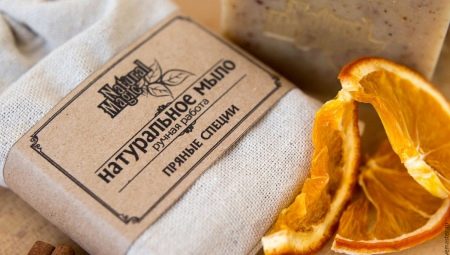Soap is considered to be natural, which is made without the use of fat substitutes, artificial colors and flavors, only natural ingredients are used. In this regard, this soap is suitable for any type of skin and even for children.
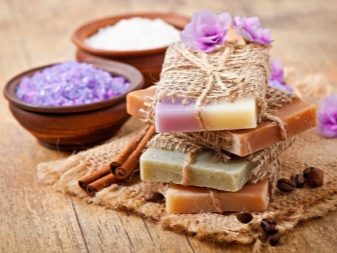
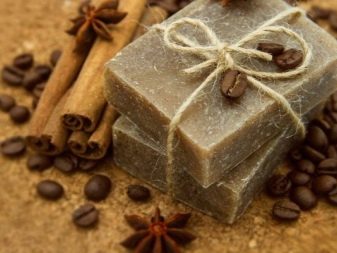
Features
The advantage of such a soap is that it is possible to add medicinal ingredients to it, for example, cosmetic oils, which increase the benefits of the product. You can buy them at the pharmacy. Such home-made soap at home can be made “from scratch” - using a natural soap base, oils, refined fats, natural dyes. When you yourself are engaged in soap making, you fully know the whole process of its preparation and therefore you are sure that no harmful additives are included in the soap, unlike a store product.
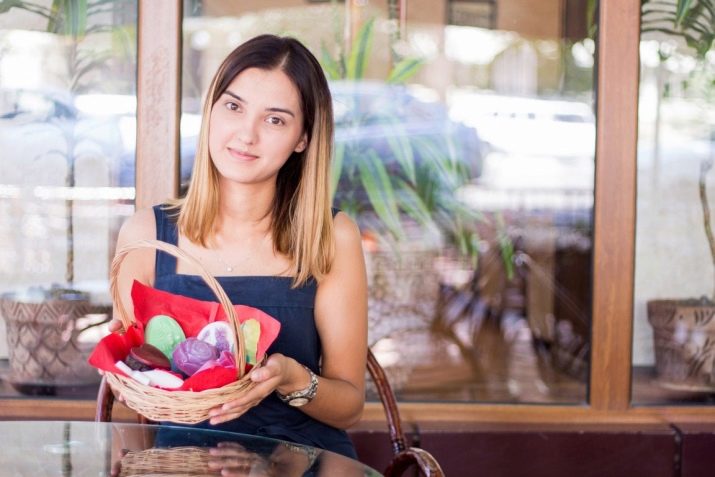
What components are included?
The following ingredients are used in natural soap.
- Soap base. You can buy it in a specialty store or cook it yourself from baby soap.
- Essential oils. They are used to give the necessary flavor to the final product. It is necessary to select this ingredient individually so that it does not cause allergies and unwanted reactions. So that the concentrated ingredient does not cause irritation on the skin, it is enough to make a couple of drops, not more.
- Base oils. The main component of natural soap. Oils nourish your skin with vitamins and other beneficial components that will cleanse and moisturize it. The most commonly used burdock, coconut, castor, olive oil.
- Dyes. It is best to use natural dyes.To be of more benefit, and they certainly will not cause potential harm.
- Scenery. To decorate the product, you can use various dry flowers, cinnamon sticks, jewelry, and if you add ground coffee, sugar, then the soap will act like a scrub. Dried herbs will give the final product an unusual look and add beneficial properties.
- Various additives. In the soap you can add not only any essential oils for aroma, but also flower petals, pharmacy herbs, oatmeal flakes, orange, lemon and coconut flakes, honey and much more tasty and healthy. It is not recommended to add berries and fruits, as they will deteriorate over time, as a result, the soap will quickly become unusable.
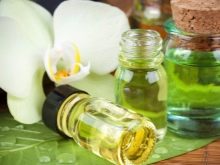
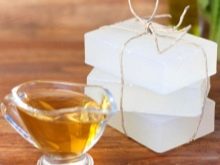
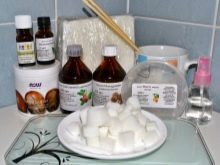
Options
Each base oil has its own beneficial properties. Now consider the most common oils and tell what skin types are they suitable for.
- Almond: Suitable for all skin types. Moisturizes the skin, nourishes vitamins, tidies up the sebaceous glands.
- Castor: for dry and combination skin. Whitens the skin, removes age spots and fine wrinkles, nourishes.
- Coconut: for all skin types. Protects from UV rays, smoothes wrinkles and nourishes the skin.
- Burdock: for all skin types. Nourishes, improves blood circulation.
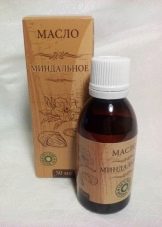
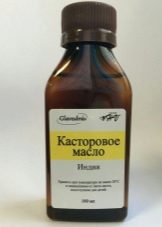
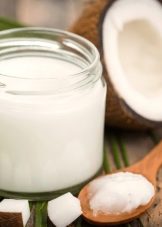
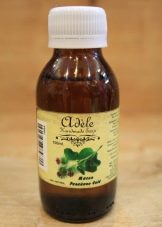
What dyes are worth using?
To create a natural soap, you can use exclusively natural ingredients. What should be applied to get the right shade?
- Red. Red and pink clay (from pink to brick red).
- Beetroot Juice (dusty pink to red). Karkade (dirty red).
- Honey. Paprika (use very carefully, add in small quantities).
- Redhead. Carrot and pumpkin juice (bright red), sea buckthorn oil.
- Yellow. Pharmacy chamomile and calendula flowers (light yellow), turmeric, curry powder (should be used very carefully).
- Green. Dry greens (light green), cucumber (bright green), cosmetic henna (from dull green to brown).
- Blue. Chamomile oil.
- Blue. Eggplant peel, grape juice.
- Brown. Cocoa beans, coffee, milk chocolate.
- Beige. Baked milk.
- Grey. Poppy seeds, activated carbon.

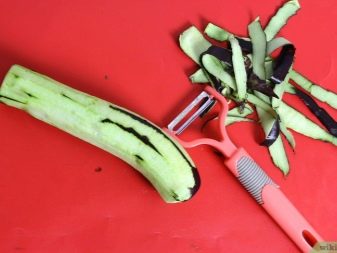
Soap with natural dyes should be stored in a dark place, because in the sun they quickly fade and lose their color.
How to make it yourself?
To cook natural handmade soap, you must strictly follow the following points, then you will not have any problems with the process. What is required for this:
- soap base (white and transparent) or baby soap;
- base oils;
- essential oils;
- natural dyes;
- various additives;
- Scenery;
- capacity for melting MO;
- a wand to interfere with the base (also suitable for land);
- soap hardener.
The recipe looks like this. To get started, take the base, finely chop it, melt in a water bath or in a microwave. Then pour the oil (olive, burdock, coconut). Stir well with a wooden stick, lumps should not be allowed. Next, we add the essential oil, dye, additional additives (ground coffee, salt, sugar, oatmeal) and decorations.
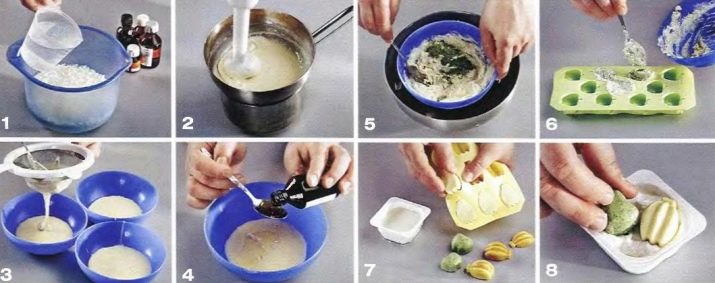
Once again, mix everything thoroughly. And before pouring everything into a mold, it should be treated with alcohol, and only then pour the composition. Then we put everything in the refrigerator. We take out when the soap completely hardens, and use it for its intended purpose.
See how to make natural soap with your own hands in the following video:
